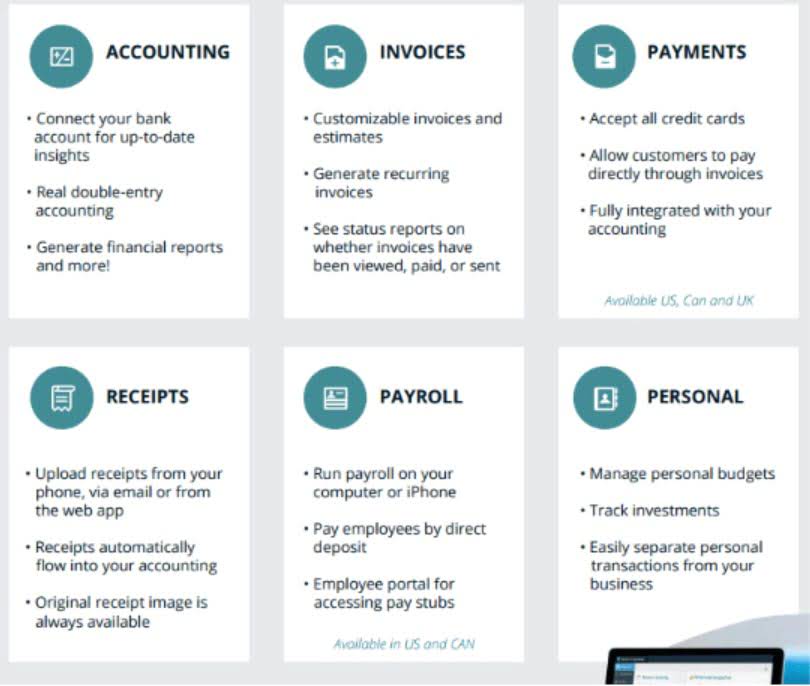Inventory Accounting Guidelines
Content

Inventories also play an important role in national accounts and the analysis of the business cycle. Some short-term macroeconomic fluctuations are attributed to the inventory cycle.
Suppose this retailer buys the inventory from a wholesaler or manufacturer and pays $3,000 for 300 pairs of jeans. Because of inflation as well as discounts and sales, however, prices tend to fluctuate. For instance, this retailer might buy 100 pairs of jeans on Monday for $1,000 ($10 per pair), and 200 pairs of jeans on Friday for $2,150 ($10.75 per pair). Under the Specific Identification Method, the retailer would have to mark or code every pair of jeans, to determine which purchase a particular pair of jeans came from. This method is far too cumbersome for companies with large and even medium-sized inventories, although it is the most precise way of determining inventory prices. Companies generally disclose their inventory accounting methods in their financial statements, usually as a footnote or a parenthetical note in the relevant sections.
The Division Of Financial Affairs
Appreciation in value – In some situations, some stock gains the required value when it is kept for some time to allow it reach the desired standard for consumption, or for production. Calculate the value of the damaged inventory at the end of the accounting cycle to write-off the loss.
- A discussion of inventory from standard and Theory of Constraints-based cost accounting perspective follows some examples and a discussion of inventory from a financial accounting perspective.
- For instance, a sandwich shop’s delivery truck is not considered inventory because it has nothing to do with the primary business of making and selling sandwiches.
- Therefore, a major advantage of FIFO is that it has the effect of maximizing net income within an inflationary environment.
- Also known as buffer stock, these products help keep companies from running out of materials or high-demand items.
- QuickBooks Accounting software was built by Intuit as an easy-to-use accounting solution for small- and medium-sized businesses.
Some production processes have split-off points at which multiple products are created. The accountant must decide upon a standard method for assigning product costs in these situations.
Costs Associated With Inventory
Both Xero and QuickBooks do also have tools available to help with the inventory side of accounting. But they will make it much simpler to organise and present come the end of tax year. Sales are also being made at the same time, turning inventory into cash.

However, if you are in a service business that also has some inventory, it could impact you, too. If you’re looking for accounting software that can track inventory for your business, be sure to check out The Ascent’s accounting software reviews. Using LIFO, because the $6 crystals were the last inventory items added before the customer’s purchase on January 20, they are the first ones sold. Inventory are the items that your business has bought, with the intention of on-selling to customers. The items may be resold without change, or they could be combined into a new product.
How To Choose The Right Inventory Accounting Method
So when a company shrinks its inventory, it sells older, less expensive inventory. Therefore, the cost of goods sold is lower, net income before taxes is higher, and net income is higher than it otherwise would have been. Well, motor vehicles would fall undernon-current assetsin thebalance sheetfor most businesses. However, in this particular case, the business intends to sell them as part of their regular business operations , and so these cars are classified as “inventory” under the category of “current assets.” FIFO and LIFO are two prominent ways to account for inventory when recording cost of goods sold. FIFO means that you recognize the first inventory acquired as the first sold.

This assumes you sold the chairs purchased later before those you purchased first. There was a time when screen printing was the overwhelmingly favored form of printed t-shirt production for businesses. But now DTG is becoming increasingly popular, particularly with Etsy and other … On the other hand, when you aren’t proactively managing your inventory, you risk running out of products. When you oversell , you will face customer service challenges that mar your reputation. If your business is looking to impress investors or needing to qualify for a loan, the FIFO method is your best bet.
The cost of goods flows to the income statement via the Cost of Goods Sold account. The weighted average method falls right in the middle of FIFO and LIFO. This method averages the cost of any new inventory purchases with the cost of existing inventory to arrive at a weighted average cost, which is then readjusted as more inventory is purchased. Your products are considered an asset, and you need a consistent way of measuring its value for many different reasons. Using an https://www.bookstime.com/ method is the perfect way of assign value to your inventory in a dependable fashion.
The Basics Of Inventory Accounting
The basic concept of cost layering, which involves tracking tranches of inventory costs, involves the first in, first out layering system and the last in, first out system. A different approach is the assignment of a standard cost to each inventory item, rather than a historical cost. It’s essential to know your real-time profitability and cash-flow levels to scale up and stay ahead of your competition. The LIFO method uses the most recent inventory value for the cost of sale transaction when the sale is made.
- Departments receiving revenue (internal and/or external) for selling products to customers are required to record inventory.
- A cell phone consists of a case, a printed circuit board, and components.
- If you only sold a single item, inventory accounting would be simple, but it’s likely that you have multiple items in inventory and need to account for each of those items separately.
- Nevertheless, these attributes of LIFO are present only in an inflationary environment.
- There are a couple of methods for determining the cost to you – known as LIFO and FIFO, but this is discussed later.
- Inventory analysis is the study of how product demand changes over time and it helps businesses stock the right amount of goods and project how much customers will want in the future.
The second process is simpler – you don’t see the cost component of a sale until you have received the purchase invoice. With the first method, you see a provisional cost of sale every time an item is shipped, but the actual value is not known until the supplier’s purchase invoice is received. If your system does not track each delivery of inventory separately, then you need to apply a single cost to each item when you value the inventory . This single cost value averages out the price paid for the items currently in stock. There are many advantages of using a multifunctional operating system for managing your inventory accounting. One is that it allows you to collect varied accounting and inventory data to generate actionable insights that have value to other departments besides accounting. Whether your small business has a full-time accountant, or you’re a business-of-one and do your own tax and invoicing, FreeAgent’s small business accounting software dashboard is easy to use.
The Importance Of Inventory Control
In the lessons throughout our website chapter on inventory we’ll look at the different accounting rules for inventory and how these are applied in trading and manufacturing businesses. Having insight into your stock at any given moment is critical to success. Decision makers know they need the right tools in place to be able to manage their inventory effectively. NetSuite offers a suite of native tools for tracking inventory in multiple locations, determining reorder points and managing safety stock and cycle counts. Find the right balance between demand and supply across your entire organization with the demand planning and distribution requirements planning features. Cycle counting benefits extend well past the warehouse by keeping stock reconciled and customers happy while also saving businesses time and money. Inventory control helps companies buy the right amount of inventory at the right time.
As a result, COGS helps you determine the amount of gross profit made in one or more sales. Download all 10 chapters of this inventory guide in one handy PDF – so you can easily upscale inventory management in your retail business. Expired inventory is a type of obsolete inventory specific to perishable products, such as food or medicine.
This data helps an organization be more responsive, up-to-date, and flexible. In manufacturing, inventory consists of in-stock items, raw materials and the components used to make goods. Manufacturers closely track inventory levels to ensure there isn’t a shortage that could stop work.
Your on-hand, unsold inventory needs to be included as an asset in end-of-year financial records. Meaning the crux of the matter in all this is to correctly track both the cost of any inventory sold and place an accurate value on the unsold inventory being held at the end of each accounting period. When selling inventory to a non-Cornell entity or individual for cash/check, record it on your operating account with a credit to sales tax and external income and debit to cash. When selling inventory and recording an accounts receivable, use an accounts receivable object code. The accounting for inventory involves determining the correct unit counts comprising ending inventory, and then assigning a value to those units.
Learn accounting fundamentals and how to read financial statements with CFI’s free online accounting classes. In an inflationary period, LIFO will generate Inventory Accounting higher Cost of Goods Sold than the FIFO method. As such, using the LIFO method would generate a lower inventory balance than the FIFO method.
What Is The Meaning Of Lifo & Fifo?
The periodic inventory system is ideal for smaller businesses that maintain minimum amounts of inventory. The physical inventory count is easy to complete, small businesses can estimate the cost of goods sold figures for temporary periods.
- Learn accounting fundamentals and how to read financial statements with CFI’s free online accounting classes.
- Although this is a very simple way to keep track of merchandise, it has many downsides.
- When selling inventory and recording an accounts receivable, use an accounts receivable object code.
- Inventory software gives you the ability to view your inventory, its levels and its location in your warehouse.
- Note that reducing overheads will increase your short term profit, since you are adding value to your assets and deferring the build cost into a later Cost of Sale transaction.
Some retailers, for example, sell only one line of products, such as blue jeans. Such a retailer may have an inventory that includes various styles and sizes, but the inventory on the whole is similar.
Accounting For Expired Inventory
Inventory accounting is a term which refers to how you reflect the value of your company’s stock and inventory in your financial ledgers. Several methods are available, and the value of your stock-on-hand can vary at any given point in time depending on which method you choose. Just like motor vehicles, land and buildings often fall under “non-current assets” in thebalance sheet for a business. Inventory analysis is the study of how product demand changes over time and it helps businesses stock the right amount of goods and project how much customers will want in the future. Also known as obsolete inventory, excess inventory is unsold or unused goods or raw materials that a company doesn’t expect to use or sell, but must still pay to store. Increase your sales and keep track of every unit with our powerful stock management, order fulfillment, and inventory control software.
There are different acceptable methods that you may choose for valuing inventory in these circumstances. This method calculates an average per unit cost and applies it to both the units in inventory and to the units sold. Inventory accounting is the valuation of inventory products for resale. Our sales engineers are experts in automatic asset tracking, tagging and identification,a nd can answer all your questions. Reduce replacement costs and integrate seamlessly with durable asset tracking labels. Durable Labels and Tags for Harsh Industrial Environments Explore barcode labels designed for permanent tracking of assets installed in harsh operating conditions. Subtract leftover, unsold inventory at the end of the accounting period.
Specific identification is the most accurate inventory accounting method. It tracks the cost of each item in your inventory and the actual price of each item that sold. This method requires a massive amount of information tracking, so it is typically only used for unique, high-cost items, like cars, works of art, jewelry, and other luxury items. It allows you to evaluate the Cost of Goods Sold and, subsequently, your overall profitability. To effectively price your products, you must truly understand how much they cost you. There are different methods of tracking the cost, just as there are different types of online businesses. The important thing to remember is that they all can affect your bottom line – so you must choose wisely.
Fundamental Principle Of Ias 2
Accounting for inventory is the system that counts and records changes in the value of stock such as raw materials, WIP and finished goods, which are all considered assets. Financial accounting for inventory provides an accurate valuation of these stock assets.
